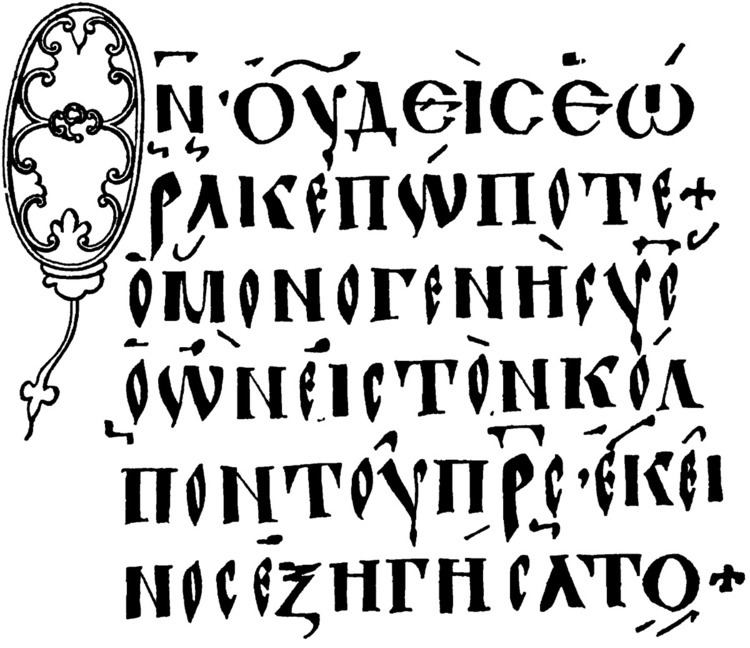Name Codex Harleianus 5598 Date 995 | ||
 | ||
Found John Covell in 1677 at Constantinople | ||
Lectionary 150, designated by siglum ℓ 150 (in the Gregory-Aland numbering), is also known as Codex Harleianus. It is a Greek manuscript of the New Testament, on vellum leaves and one of four extant Greek lectionaries with explicit dates from before 1000.
Contents
Description
The manuscript is written in compressed Greek Uncial letters, on 374 parchment leaves (35.2 cm by 26.7 cm), in 2 columns per page, 21 lines per page, with ornaments. The capital letters and nomina sacra are in red ink. The codex includes ten leaves of paper containing a series of Lessons from the Gospels, John, Matthew and the Luke lectionary (Evangelistarium). The image shows the text of John 1:18.
It is one of the most beautiful lectionary codices, with a scribal date of 27 May 995 A.D. 'It is a most splendid specimen of the uncial class of Evangelistaria, and its text presents many instructive variations.' It also contains musical notation.
History
According to the colophon it was written by a presbyter called Constantine. The manuscript came from Constantinople. In 1677 John Covel, chaplain of the English embassy in Constantinople, purchased this manuscript. It was shown by him to John Mill (1645-1707), in London. From Covell it was purchased – together with other manuscripts – by Robert Harley, Earl of Oxford.
It was collated by Bloomfield and examined by Woide.
The manuscript is often cited in the critical editions of the Greek New Testament (UBS3). It is not cited in UBS4.
The codex now is located in the British Library (MS Harley 5598).
